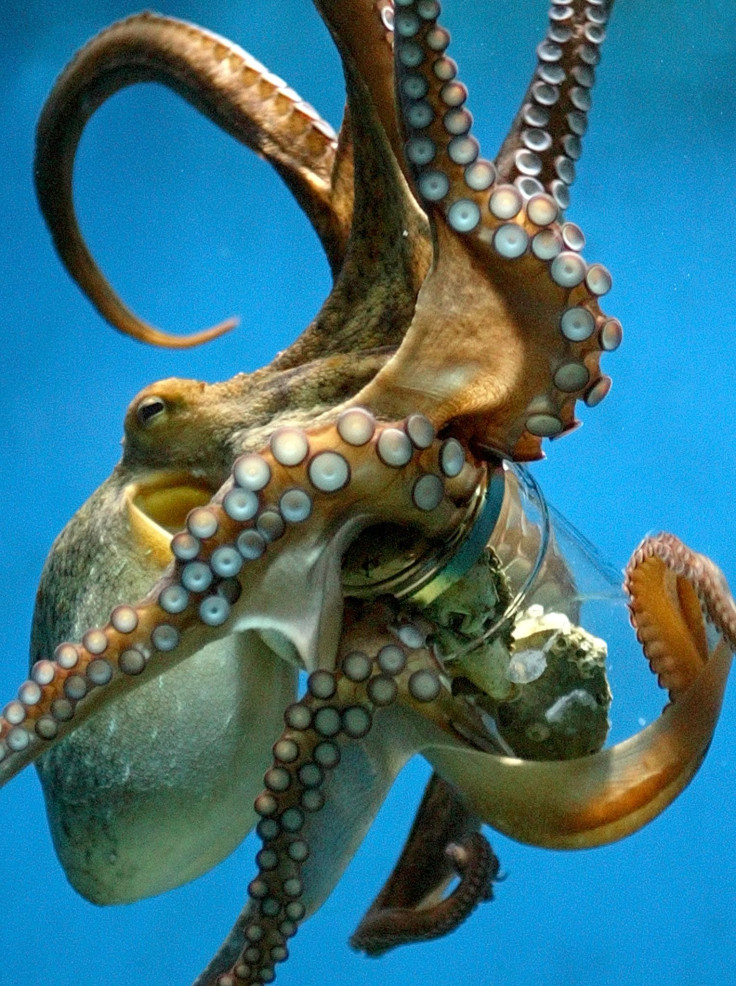Skin Of Octopus Detects Light The Same Way As Its Eyes

A new research published in the Journal of Experimental Biology adds a very unique feature to already existing list of novelties found in octopuses. It indicates that the skin of octopus contains certain pigment, the light-sensitive proteins called opsins found in the eyes, making it responsive to light.
It has already been established that octopuses can change the colour, patterning, as well as the texture of their skin to camouflage into the surrounding environment and have the ability to communicate by sending signals among themselves. The new study carried out by researchers from University of California, Santa Barbara, now reveal that the skin of octopus possesses a similar type of cellular mechanism which can detect the light as its eyes can do.
The study authors and evolutionary biologist Desmond Ramirez and Todd Oakley at University of California, Santa Barbara, carried their research by removing patches of skin from 11 California two-spot Octopus bimaculoides. They later mounted these skin fragments on to the Petri dishes and exposed them to light of different wavelengths with the help of light emitting diodes.
By doing so, they observed that the chromatophores present in the skin expanded rapidly and remained in that state on exposure to continuous bright white light. Through this observation, the researchers indicate that the light sensors in the skin are connected to the chromatophores which enables the octopus to sense light without any input from the central nervous system, a process referred to as Light-Activated Chromatophore Expansion, or LACE.
Ramirez says, “Octopus skin doesn't sense light in the same amount of detail as the animal does when it uses its eyes and brain. But it can sense an increase or change in light. Its skin is not detecting contrast and edge but rather brightness."
The team later carried out various experiments on molecular level to determine which proteins were expressed in the skin. Surprisingly, it was found that the skin of octopus contains the protein rhodopsin, which is usually produced in the eye. Study co-author Todd Oakley says "We've discovered new components of this really complex behaviour of octopus camouflage. It looks like the existing cellular mechanism for light detection in octopus eyes, which has been around for quite some time, has been co-opted for light sensing in the animal's skin and used for LACE. So instead of completely inventing new things, LACE puts parts together in new ways and combinations."
Ramirez and Oakley now plan to conduct further research to find out if there are other marine molluscs whose skin can also sense light.
To contact the writer, email:ruchira.dhoke@gmail.com




















